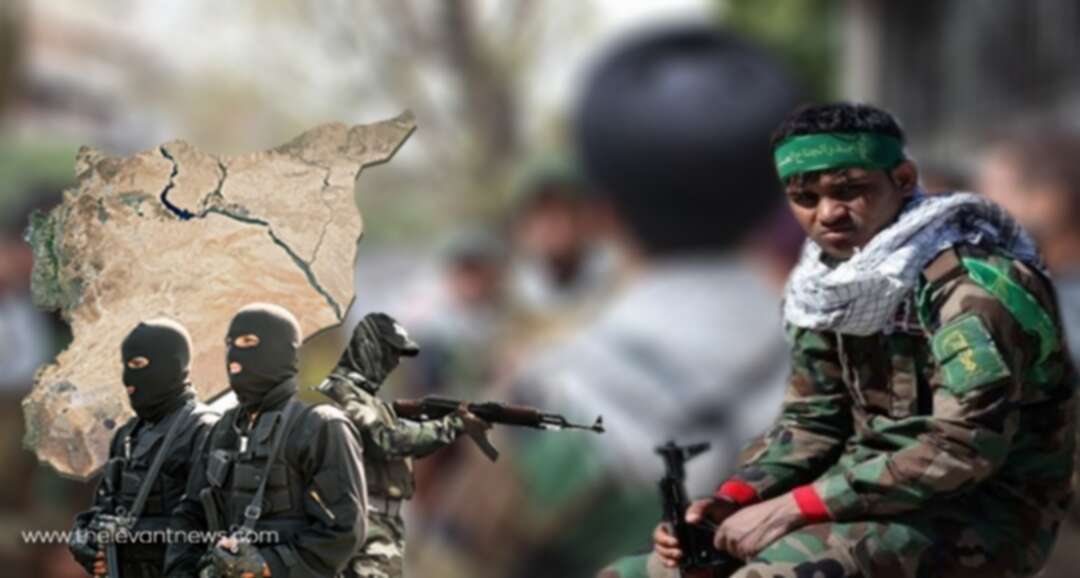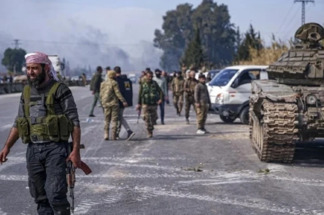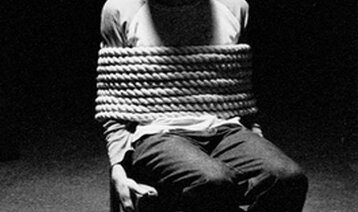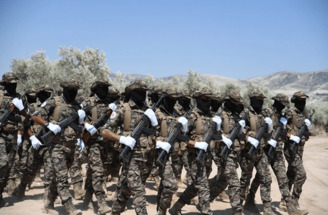-
Iran's renewed Shiite dream

Syria is the Iranian province No. 35 ″ A phrase given by the Iranian official, "Mahdi Taib," knowing that the number of provinces within the geography of Iran does not exceed 31 provinces. This announcement comes in preparation for considering Iraq, Syria, Lebanon, and Bahrain as Iranian provinces until the number declared by it is completed.
Some believe that this Iranian dream came as a result of the Arab Spring revolutions, as Iran took advantage of the chaos and began to penetrate Syrian society. However, this belief is entirely wrong, as Iran has started an attempt to extend its influence in many forms, including opening Shiite communities with different goals throughout Syria.
Shiite associations before the beginning of the Syrian revolution:
1- Al-Murtada Association: It was established in 1981 by Jamil Al-Assad (uncle of the head of the Syrian regime). The association carried a social interface and sectarian tasks, and this association is considered as the religious reserve of the military wing Defense Brigades Rifaat al-Assad led in the eighties, the brother of the head of the regime at the time.
The association promoted the idea that the Bedouins and farmers on the Jazeera region are Shiites of origin, and the activity of this association was public.
Jamil al-Assad established relations with Tehran and enjoyed the support of the Shiite mullahs. In this context, 76 Husaynids were opened in the cities of Lattakia and Tartous only.
2- Al-Bustan Charitable Society: It was established by Rami Makhlouf in 1999 in the Lattakia countryside under cover of assisting the Syrian poor. However, it was limited to providing assistance to the people of the Alawite community, and it opened a branch for it in the Mazzeh region. This association soon became a center for converting to Shiites and adapting the Shabiha to participate in suppressing the demonstrations. This association took advantage of people's relief and humanitarian needs.
3- Lebanese Shiite Hezbollah: Established in 1982 in Lebanon, it is considered religious security and military movement by Iranian institutions in Lebanon.
There are dozens of speeches for the Secretary-General of Hezbollah, Hassan Nasrallah, through which he confesses that he is a small soldier in the army of the Faqih.
The Assad regime has allowed the party's religious thinker, Muhammad Hussein Fadlallah, to give religious lessons south of Damascus every week to consolidate the Shiite authority.
At the funeral ceremony for the head of the former regime, Hafez al-Assad, Hassan Nasrallah presented a military parade of the party's elite fighters with their official black uniforms, sending a clear message that the Lebanese Shiites are loyal to Bashar al-Assad, and this is what happened after the beginning of the Syrian revolution in 2011.
The conversion to the Shiite community after the beginning of the Syrian revolution:
In 2014, the head of the Syrian regime, Bashar Al-Assad, issued a presidential decree to allow the teaching of Shi'a Islam in Syrian schools. The first public Shi'a school was opened in 2014 under the name “The Great Messenger School” near the Syrian city of Jableh.
The opening of this school was preceded by the establishment of 40 smaller Shiite schools in Damascus, especially in Hamra Street and Bab Musalla. The Syrian regime granted the Shiite community, after the revolution, dozens of legal secondary schools belonging to the Ministry of Awqaf, and among the most famous of these schools is the “Mohseni School” in Damascus.
Iran's methods of Shiite penetration:
No doubt changing a person's convictions and affiliation is not an easy matter, as persuading someone with a new idea needs a lot of effort and providing evidence, persuasion, and gaining the trust of the person. This is what Iran worked on, as it followed various methods from different angles to extend its Shiite influence, especially after 2012, where it did not spare a technique to achieve its goals.
Available means, including:
1 - The popular side: It has established ties and relations with the heads of the tribes, in addition to the affluent families, exchanged visits, and granted them gifts and funds for those who joined the Shiite community. It also happened through their contact with the leaders of the Baggara clan in Deir Al-Zour, and they gave speeches on their occasions, such as Ashura and other days, and they would invite the entire public of men and women.
2- The financial aspect: they distribute money and loans to the poor and needy. Giving gifts to those who join the Shiite community and showing goodwill and not waiting for something in return.
3- The cultural aspect: Shiite preachers recruited by Iran in Syria held exhibitions containing religious books, and these exhibitions were held in Marjeh Square and others. The preachers did not neglect holding seminars attended by students in universities or cultural centers that attract a large segment of the Syrian people's intellectuals to wash their brains in the name of religion and resistance.
Shi'a advocates followed the modern means of communication, where they presented their programs on the channels of the Syrian regime, opened children's channels for Shiism, distributed computer discs containing Shiite books at nominal prices, and provided facilities to study in Iranian universities in various disciplines.
4 - The religious aspect: such as building Husayniyat in Damascus and Daraa, participating in religious occasions, and using them to penetrate into Syrian families, such as distributing sweets and presenting gifts. Shi'a preachers promoted pleasure marriage, especially among young people and adolescents.
5 - Demographic aspect: The presence of Iranian and Iraqi Shiites has become a norm in Damascus, especially in Sayyida Zainab, where Syria is witnessing the settlement of Shiites in the place of the indigenous people in areas that are controlled by the regime after the displacement of its people to the camps and neighboring countries.
6- The health aspect: Iran used hospitals and dispensaries to show sympathy with the Syrian people, such as the "Charitable Hospital in Aleppo." It is noticeable that these hospitals provide medical services and aid to the elements of the regime, the Baath brigades, and the national defense militias.
7 - The media aspect: using the cause of Palestine and liberating Jerusalem to include more public in the ranks of the Shiite school of thought, and preachers have been active in the Palestinian camps, taking advantage of the people's sympathy for the Palestinian cause.
8 - The official aspect: By holding tens of agreements with the Syrian regime in all fields and allowing tens of thousands of Iranians to officially enter for Hajj and tourism, the government granted citizenship to hundreds of Shiites while condoning giving them to Kurdish citizens for decades.
The scouts of Wilayat, the most dangerous movement:
It is considered the most dangerous because it targets Syrian children and adolescents and launches pages and videos on social media that publishes its charitable and humanitarian works. The Scout slogan is "and obey." It aims to control the Syrian youth and recruit them in the footsteps of ISIS children, as Iran follows the same method under the name of the scouts of Wilayat.
The general in the Iranian Revolutionary Guards, Hasan Al-Shatry, has established scout centers in Syria, and this scout includes many teams, including the scout of Imam Mahdi.
Iran has started focusing on children through these scouts, which is one of the most critical organizations interested in bringing children to the Shiite community and urging them to carry out activities that pertain to the Shiite sect near the shrines and Husaynids and is instilling the concept of considering the scouts as the homeland. The president is Khamenei, and placing Iranian flags on their chests And spreading phrases glorifying the Islamic revolution in Iran.
This scout is funded by the Iranian Cultural Adviser in Damascus, which is based in Mezza. This scout conducts public activities such as exhibitions, trips, and participation in marches in support of the Syrian regime.
Indeed, this association does not aim to entertain and assist the Syrian child but instead aims to recruit and mobilize children and fill their minds with Khomeinist thought and subject them to military training similar to the training that soldiers receive in the camps. They have prepared training centers for jumping, crawling, and harsh training. Also, they have published many photos of Syrian children in uniform in several celebrations and parades.
In this endeavor, Iran opened another branch for this scout in Deir Ezzor last year 2019, and the Deir Ezzor Center included cultural, artistic educational activities, in addition to a house for memorizing the Qur'an. This center is sponsored by the "People's Committee for Syrian-Iranian Friendship."
It should be noted that staying away from the Iranian Safavid tide depends on the remaining awareness of many of the Syrian people, who sacrificed a lot to thwart Iran's plans and topple the regime of Al-Fakih in Syria and cut the dream of the so-called Shiite Crescent.
Aya Alhalabi
You May Also Like
Popular Posts
Caricature
BENEFIT Sponsors BuildHer...
- April 23, 2025
BENEFIT, the Kingdom’s innovator and leading company in Fintech and electronic financial transactions service, has sponsored the BuildHer CityHack 2025 Hackathon, a two-day event spearheaded by the College of Engineering and Technology at the Royal University for Women (RUW).
Aimed at secondary school students, the event brought together a distinguished group of academic professionals and technology experts to mentor and inspire young participants.
More than 100 high school students from across the Kingdom of Bahrain took part in the hackathon, which featured an intensive programme of training workshops and hands-on sessions. These activities were tailored to enhance participants’ critical thinking, collaborative problem-solving, and team-building capabilities, while also encouraging the development of practical and sustainable solutions to contemporary challenges using modern technological tools.
BENEFIT’s Chief Executive Mr. Abdulwahed AlJanahi, commented: “Our support for this educational hackathon reflects our long-term strategic vision to nurture the talents of emerging national youth and empower the next generation of accomplished female leaders in technology. By fostering creativity and innovation, we aim to contribute meaningfully to Bahrain’s comprehensive development goals and align with the aspirations outlined in the Kingdom’s Vision 2030—an ambition in which BENEFIT plays a central role.”
Professor Riyadh Yousif Hamzah, President of the Royal University for Women, commented: “This initiative reflects our commitment to advancing women in STEM fields. We're cultivating a generation of creative, solution-driven female leaders who will drive national development. Our partnership with BENEFIT exemplifies the powerful synergy between academia and private sector in supporting educational innovation.”
Hanan Abdulla Hasan, Senior Manager, PR & Communication at BENEFIT, said: “We are honoured to collaborate with RUW in supporting this remarkable technology-focused event. It highlights our commitment to social responsibility, and our ongoing efforts to enhance the digital and innovation capabilities of young Bahraini women and foster their ability to harness technological tools in the service of a smarter, more sustainable future.”
For his part, Dr. Humam ElAgha, Acting Dean of the College of Engineering and Technology at the University, said: “BuildHer CityHack 2025 embodies our hands-on approach to education. By tackling real-world problems through creative thinking and sustainable solutions, we're preparing women to thrive in the knowledge economy – a cornerstone of the University's vision.”
opinion
Report
ads
Newsletter
Subscribe to our mailing list to get the new updates!






















